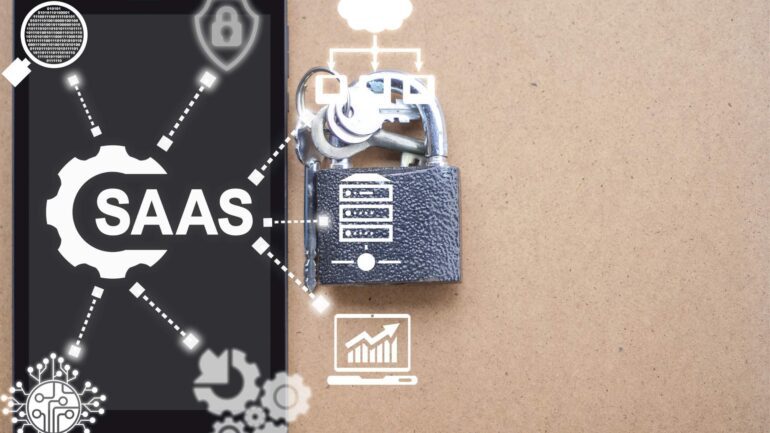TL;DR:
- Generative AI software introduces significant security vulnerabilities to SaaS environments.
- Threat actors can exploit generative AI to bypass weak authentication protocols, leading to potential hacking, password-guessing, and phishing attacks.
- Employees connecting unsanctioned AI tools to SaaS platforms unknowingly grant access to sensitive data, creating invisible conduits for potential breaches.
- Data shared with generative AI tools are susceptible to leaks, posing risks to organizational information and user identities.
- Organizations need comprehensive SaaS security measures, including SaaS security tooling and proactive cross-functional collaboration.
- A robust SaaS security posture management (SSPM) solution is crucial to enforce multi-factor authentication, monitor configuration drift, and identify and manage unsanctioned AI tools.
- Building trust and collaboration between security leaders and employees is essential to strike a balance between productivity enhancement and risk mitigation.
- Embracing SSPM provides insights, visibility, and continuous monitoring capabilities, reducing the attack surface and mitigating risks associated with generative AI and SaaS security.
Main AI News:
As the adoption of generative AI software and similar programs soars, the enterprise faces a pressing challenge: the vulnerability of SaaS security. According to a recent generative AI survey, a staggering 49% of executives currently utilize ChatGPT, with an additional 30% planning to leverage this ubiquitous AI tool in the near future. With potential cost-savings and enhanced productivity as key drivers, employees and business leaders are increasingly drawn to these powerful AI solutions. However, the risks they introduce to SaaS security should not be overlooked.
One prominent concern is the exploitation of generative AI by threat actors to manipulate SaaS authentication protocols. Techopedia warns that hackers can employ generative AI for password-guessing, CAPTCHA-cracking, and even the development of potent malware. The impact of these attacks should not be underestimated. For instance, the CircleCI security breach in January 2023 was attributed to a single engineer’s laptop being infected with malware, highlighting the potential damage that can be wrought.
Moreover, the hypothetical scenario of generative AI running a phishing attack raises further alarm. Cybercriminals can use ChatGPT to craft personalized spear-phishing messages, successfully fooling even well-trained employees who are vigilant against typical phishing attempts. By exploiting weak authentication protocols, hackers can bypass the fortified entry points and target more vulnerable areas, akin to sneaking in through unlocked patio doors instead of confronting the robust front door security.
To mitigate these risks, relying solely on authentication measures is insufficient. Security and risk teams must go beyond implementing multi-factor authentication and physical security keys. They require comprehensive visibility and continuous monitoring of the entire SaaS perimeter, complemented by automated alerts for any suspicious login activity. This not only helps combat cybercriminals exploiting generative AI but also monitors employees’ AI tool connections to SaaS platforms, providing crucial oversight in the face of potential threats.
Another critical concern arises from employees connecting unsanctioned AI tools to SaaS platforms without considering the associated risks. Driven by the desire for increased effectiveness and efficiency, employees are eager to embrace AI solutions that make their jobs easier. However, this adoption of unsanctioned AI tools creates invisible conduits through which sensitive data can be compromised. By connecting these AI tools to corporate accounts, such as Gmail, Google Drive, and Slack, employees unknowingly grant access to an organization’s most valuable information.
AI tools typically use OAuth access tokens for ongoing connections to SaaS platforms, maintaining seamless communication without requiring regular authentication. This convenience poses significant risks as threat actors who compromise these tokens gain unauthorized access to sensitive data stored within the SaaS systems. Unfortunately, traditional security tools like cloud access security brokers and secure web gateways are ill-equipped to detect or alert on AI-to-SaaS connectivity, leaving organizations vulnerable.
Furthermore, the data shared with generative AI tools itself becomes susceptible to leaks. Enterprises face the challenge of overseeing data submitted to these tools, often with the intention of expediting work processes and improving quality. However, the lack of oversight and security controls for most generative AI tools raises concerns about data leakage. Incidents have already occurred, such as ChatGPT users inadvertently accessing other users’ chat titles and histories. This poses not only risks to sensitive organizational information but also compromises user identities.
To address these risks effectively, organizations must implement robust SaaS security measures. Comprehensive SaaS security tooling and proactive cross-functional collaboration are crucial. CISOs should engage in good-faith conversations with leaders and end-users, understanding their needs and concerns while educating them about the potential security ramifications of unsanctioned AI tool usage. Building trust and goodwill is vital to strike a balance between productivity enhancement and risk mitigation.
A comprehensive SaaS security posture management (SSPM) solution is essential to navigating the evolving landscape of SaaS risk. SSPM provides security and risk practitioners with insights and visibility needed to proactively manage SaaS security. It enables the enforcement of multi-factor authentication and monitors for configuration drift, strengthening authentication processes and reducing vulnerabilities.
Moreover, SSPM empowers security teams to identify and manage unsanctioned AI tools connected to the SaaS ecosystem. Continuous monitoring alerts them when new AI connections are established, enabling prompt action against unapproved or over-permissioned AI tools. By embracing this visibility, organizations can significantly reduce the attack surface and mitigate the risks associated with generative AI and SaaS security.
Conclusion:
The rapid adoption of generative AI software and the integration of unsanctioned AI tools into SaaS environments pose significant risks to businesses. Cybercriminals can exploit weak authentication protocols, compromising sensitive data and conducting phishing attacks. Organizations must implement comprehensive SaaS security measures, including SSPM solutions, to enforce stronger authentication, monitor AI tool connections, and proactively mitigate risks. Collaboration between security leaders and employees is key to strike a balance between productivity and security. By embracing robust security measures, businesses can protect their SaaS environments and reduce the exposure and breach risk associated with generative AI tools.

